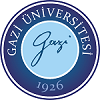
Send us your opinions, requests and evaluations.
The most common reason for students with learning difficulties needing special education and having difficulty in the learning process is that they have difficulty reading. Within the scope of this research, the aim is to identify the students with reading difficulties and prevent reading difficulties with the intervention to be applied. In this context, this study aims to determine the reading difficulty prevention effect of the Problem-Focused Scientific Based Complementary Reading Intervention (BITTTOM) that is applied during the second tier of the Response Intervention Model (RTI) to students with reading difficulties. The study is targeted to determine the rate of reading, the accuracy of reading, and reading comprehension difficulties.
In the research, a pretest-posttest quasi experimental design will be used. This research will be carried out with the second-graders class of three schools in the different district Çankaya district of Ankara, who are volunteers with level. A total of 9 classes of students in three schools will form the sample of the study. A total of 280 students are planned to be included in the study. In the study, 32 stories will be used for data collection and intervention, and comprehension measurement tools will be developed for the 16 of these stories.
The study's experimental process will be started with determining the students' reading performance, considering the reading error, reading rate, and reading comprehension. The results will then be used to compare with the class average and identify the students with reading difficulties before the intervention. This process will be completed in five weeks from the beginning of the school term. The following stages will be realized through the experimental process: identifying the students for whom Problem-Focused BITTOM will be applied; in addition to the existing in-class education, application of the Problem-Focused BITTOM practices to these students; tracking the changes on the students after the treatment by considering their levels and the class average to determine the effectiveness of the Problem-Focused BITTOM, and finally, carrying out a follow-up investigation to determine the consistency of the implementation of the BITTOM.
According to the students' performance, the Problem-Focused BITTOM implementation will consist of fluent and accurate reading, reading comprehension, and balanced reading packages. The suggested project is planned to be implemented in three processes and last in thirty months.
This research is supposed to guide the practitioners and researchers by increasing the quality of education and early response concept for the risk group students through supportive education, which is the basic philosophy of II. Stage Response Intervention Model, and prevention of academic challenges in the school.

Send us your opinions, requests and evaluations.